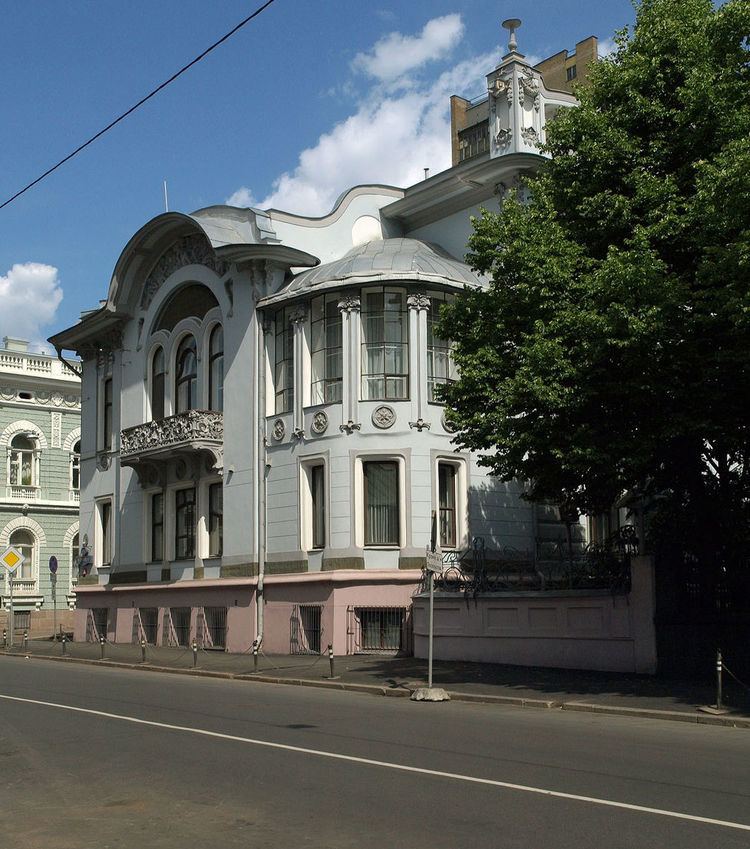 | ||
Povarskaya Street (Russian: Поварская улица), known from 1924-1991 as Vorovsky Street (улица Воровского), is a radial street in the center of Moscow, Russia, connecting Arbat Square on Boulevard Ring with Kudrinskaya Square on the Garden Ring. It is known informally as Moscow's Embassy Row, and is home to the finest mansions built in the 1890s and 1900s. Povarskaya Street also houses the Supreme Court of Russia and the Gnessin State Musical College.
Contents
Map of Povarskaya ul., Moskva, Russia, 121069
Most of Povarskaya Street lies in the Arbat District; its northern side near Kudrinskaya Square is administered by the Presnensky District.
History
Povarskaya Street follows the track of an ancient road from Moscow to Volokolamsk. In the 1570s Ivan Grozny allocated the street to oprichnina (private royal domain) and the street was taken over by his associates. In the 17th century, however, its upper-class population was diluted by lower classes. The street owes its name to cooks (povara) of the 17th century Muscovite court. Nearby lanes are also named after various court servants: bakers (Khlebny Lane), tablecloth weavers (Skatertny Lane), etc.
When Peter I established his new capital city in Saint Petersburg, this court sloboda depopulated, and the street was re-settled by nobles again, housing families including Gagarin, Golitsyn, Suvorov and the court of Peter's sister, princess Natalya Alexeevna (1673–1716). The street has retained its upper-class, exclusive role since that time. It is unusually quiet for downtown Moscow - with the exception of music from the Gnesin Institute windows, there are no retail shops, no office blocks and no public transport.
In the late 1890s, real estate developer Jacob Reck consolidated two blocks in the middle of Povarskaya and commissioned prestigious Moscow architects Lev Kekushev and Roman Klein to design exclusive single-family mansions. These buildings, occupied by foreign embassies, are a showcase of Moscow Art Nouveau style.
